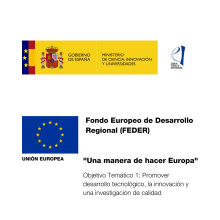Proiektuak
Projects at a Glance
Molding2D - Molecular engineering of superconducting and ferromagnetic 2D materials: towards on-demand physical properties
Among the ultimate goals of materials science is the fabrication of materials with on-demand capabilities, which could improve current technologies and inspire novel device concepts. Molding2D uses the chemical programmability of molecules to manipulate the intrinsic physical properties of 2D Materials, reaching a controllable tuning of 2D ferromagnetism and superconductivity. By combining a device approach with spectroscopic and structural characterization, Molding2D is the demonstration that molecule/2D Material interfaces constitute an ideal experimental platform to design novel materials with programmable functions.
ENSEMBLES3 Phase II - Centre of ExcelleNce for nanophotonicS, advancEd Materials and novel crystal growth-Based technoLogiEs
The grand objective of the project is to create the Centre of Excellence ENSEMBLE3, which will focus on research excellence and innovation performance in the area of crystal growth-based technologies, novel functional materials with innovative electromagnetic properties, and applications in nanophotonics, optoelectronics and medicine.SPRING - SPin Research IN Graphene
The EU-funded H2020 project SPRING (project ID 863098) is focused on the development of new graphene-based magnetic components that contribute to the creation of faster and environmentally friendly electronic devices. This international research project is coordinated by CIC nanoGUNE (ES) in partnership with IBM (CH), University of Santiago de Compostela (ES), Technical University of Delft (NL) and University of Oxford (UK), and Donostia International Physics Center (ES).
PHOTOTHERMAG - Nanomagnet logic via photothermal excitation of nanomagnetic networks
The project explores a new concept of nanomagnetic logic devices based on optothermal activation of hybrid plasmonic-magnetic metamaterials to implement ultralow power, ultrafast, and optically controlled reconfigurable Boolean and neuromorphic/stochastic computation schemes.
SCARFACE - Spin Control And Related effects at interFACES and heterostructures
This project studied spin materials and processes for beyond-CMOS devices, with a special focus on spin-to-charge conversion (an effect that allows inserting and reading spin information in a circuit without the need of magnetic materials) and molecular spinterfaces (i.e., the way in which a molecular layer affects and it is affected by a ferromagnetic underlayer).
SURFNANOCUT - Knowledge based cutting for surface engineering of aeronautic and automotive materials: understanding the fundamentals of cutting process through micro-nano structure analysis
The study of the microstructure of machined metal surfaces plays a key role in understanding the thermomechanical conditions at the tool/workpiece interface and allows us to pinpoint the driving forces that trigger microstructure formation processes. In this project, we are investigating these microstructural processes in a number of key materials for the aerospace and automotive industries: AISI 1045 steel, Inconel 718 and Aluminum 7475. The idea of the project is to understand the patterns of surface layer microstructure formation during the cutting process and use this knowledge to target improvements in the surface properties of the finished part by changing the cutting parameters.
Evaporador - Evaporador para el crecimiento de películas delgadas en alto vacío
El proyecto tiene como finalidad la compra de un evaporador de alto vacío provisto de dos tipos diversos de evaporación de materiales y un equipo de ataque físico por iones. Las características de este equipo nos permitirán ampliar los materiales disponibles en nuestra sala blanca, así como acometer procesos de fabricación con condiciones ideales en cuanto a limpieza de intercapas y con un nivel ideal de rotación de usuarios.
By funding program
Kontaktua

Yurdana Castelruiz
Projects Manager
+ 34 943574022
y.castelruiz[at]nanogune.eu





